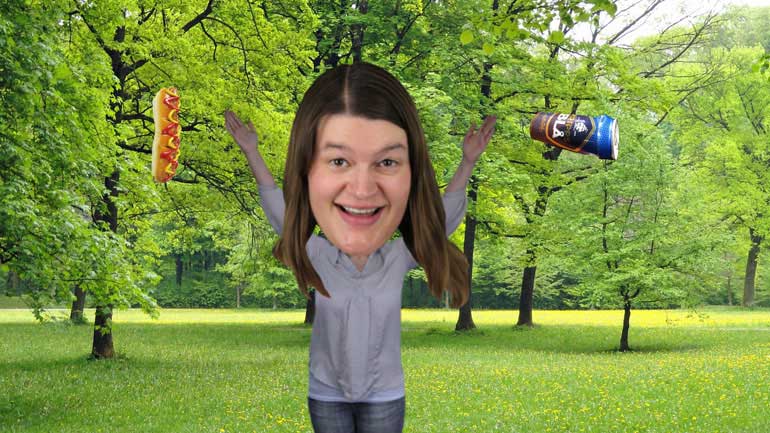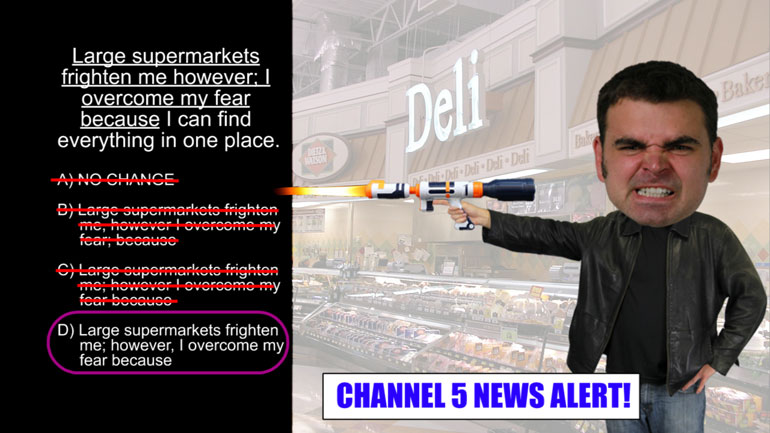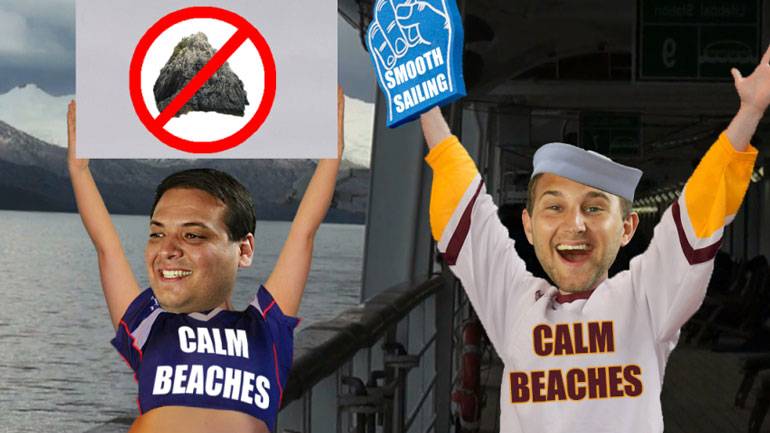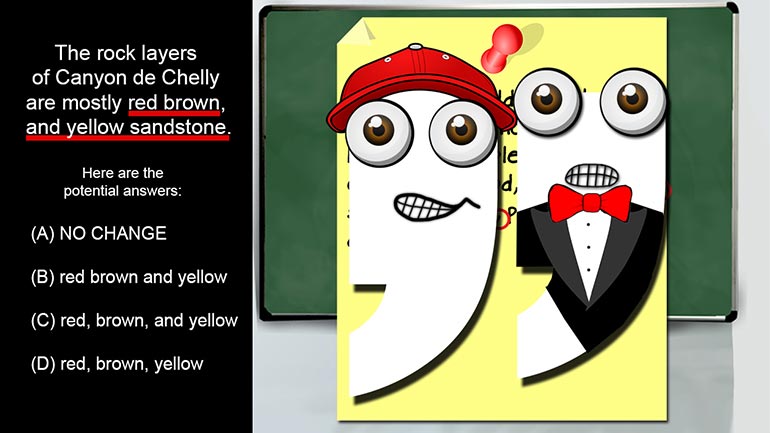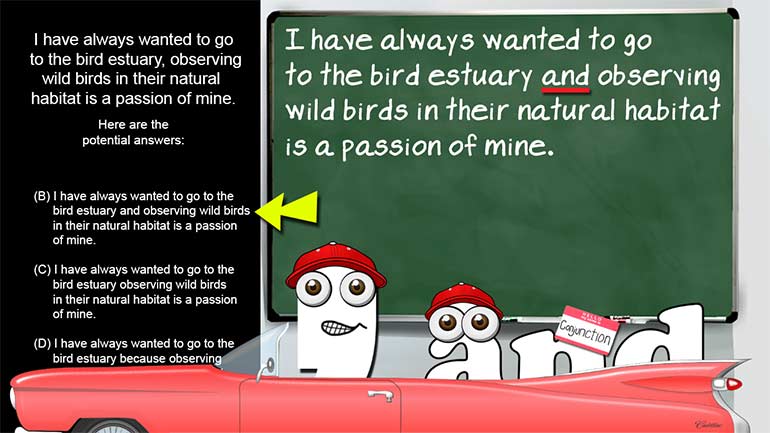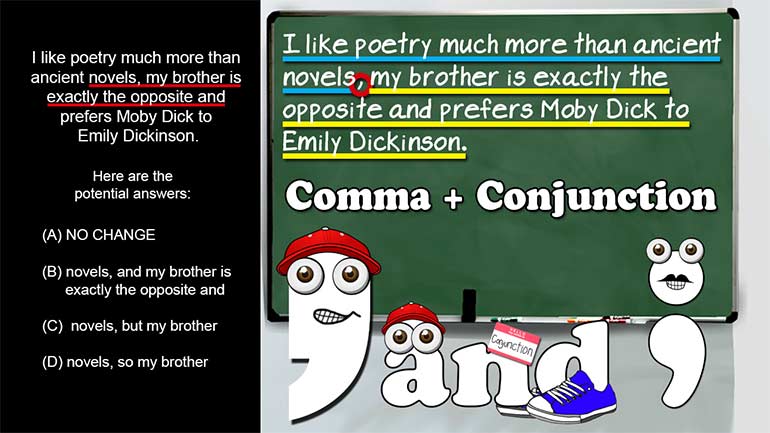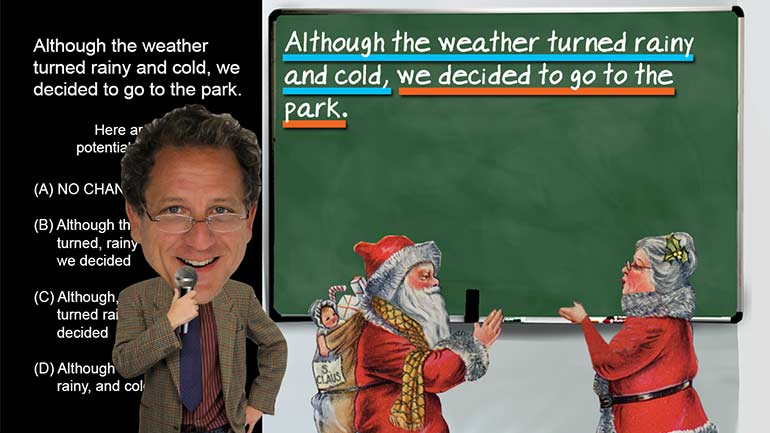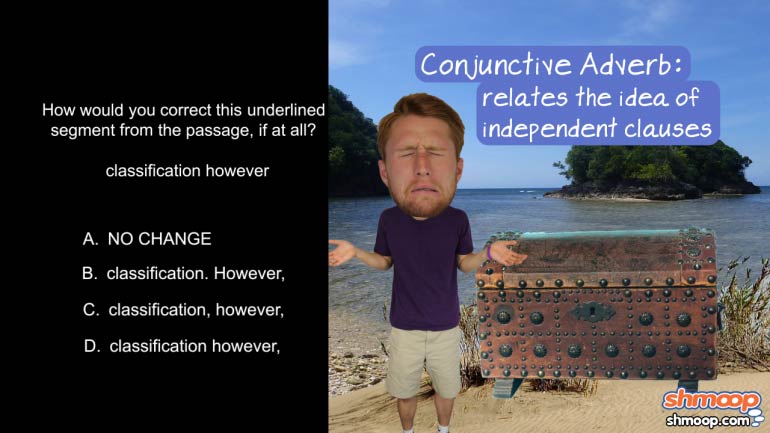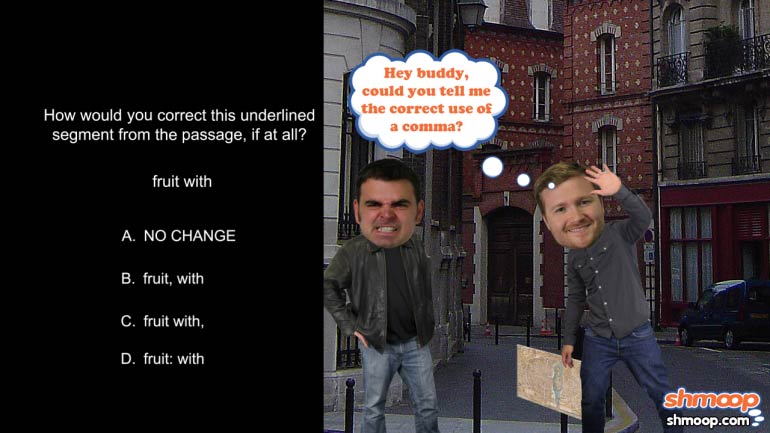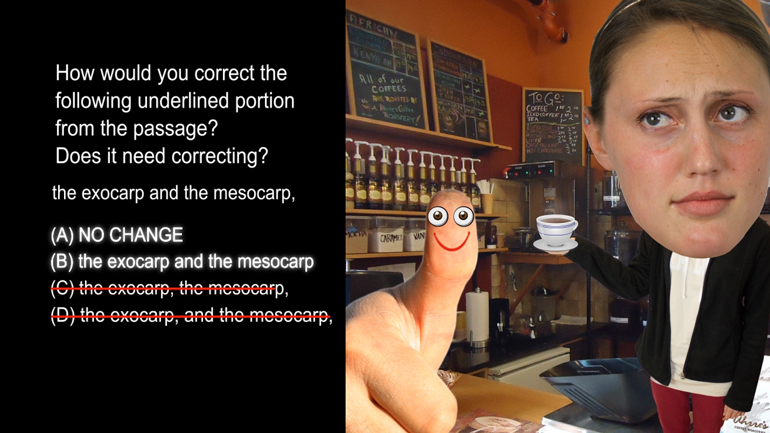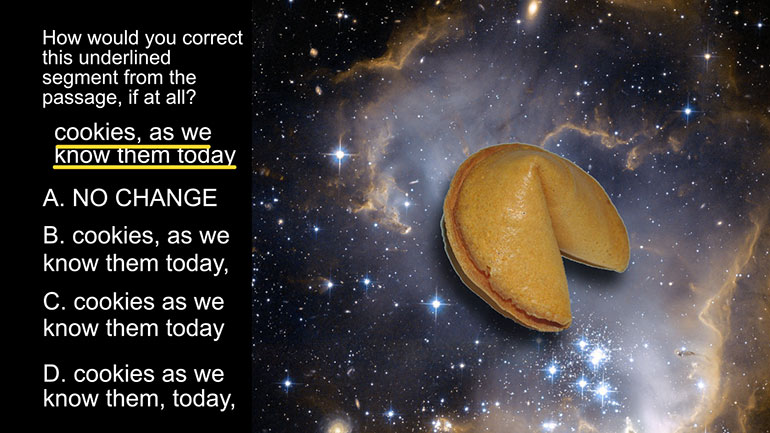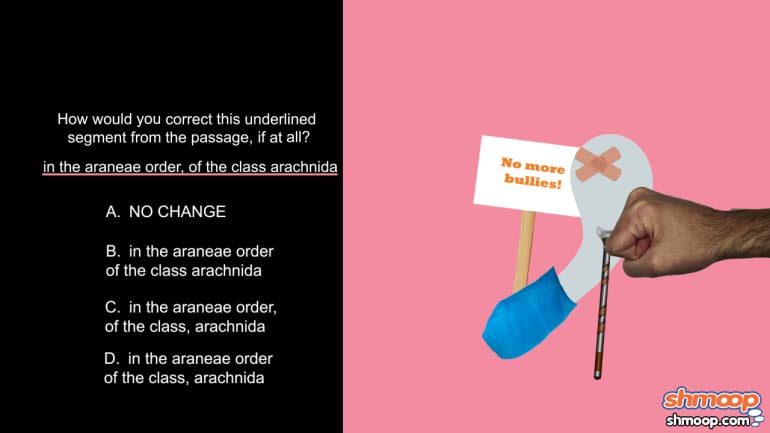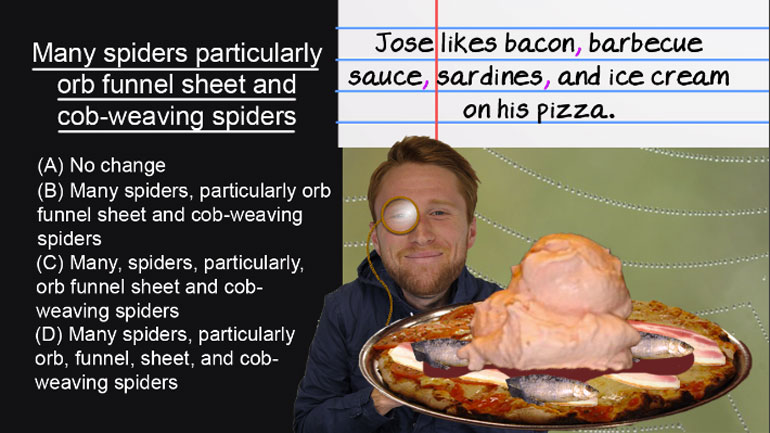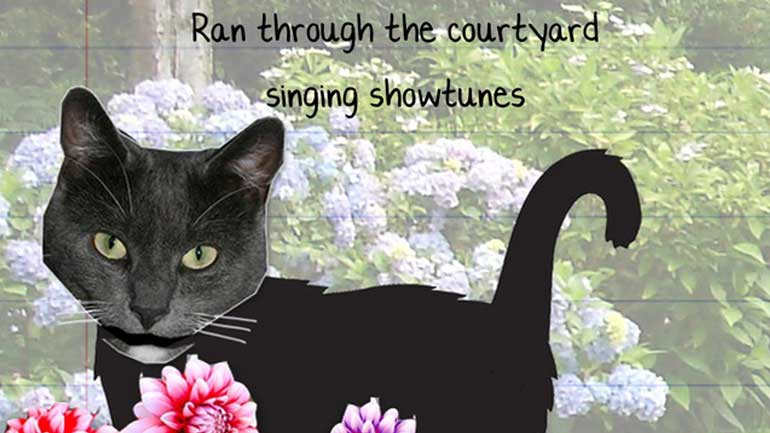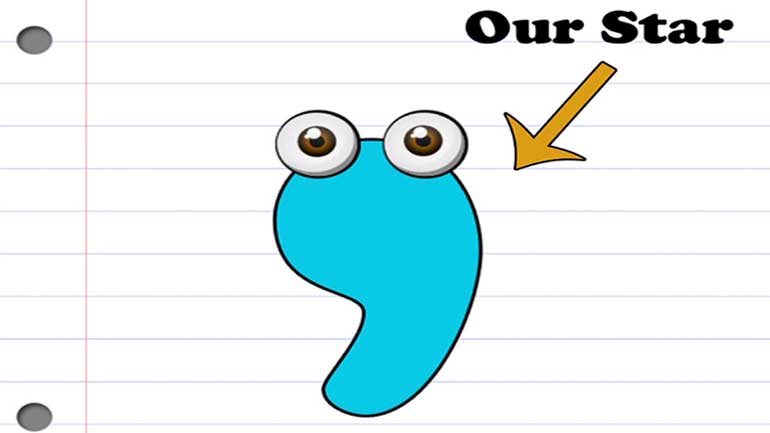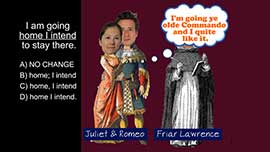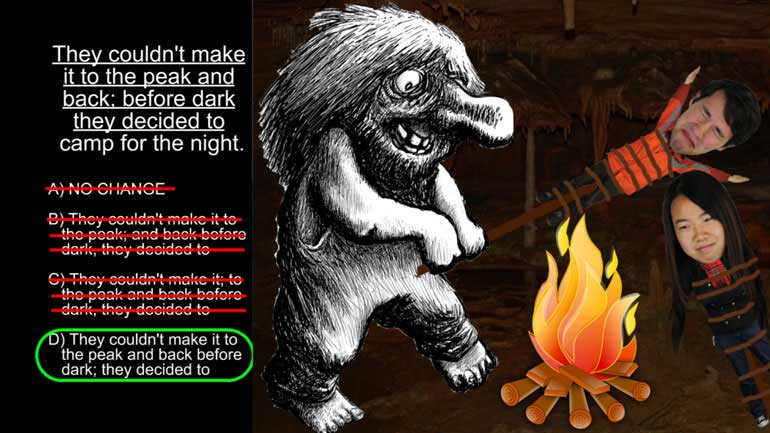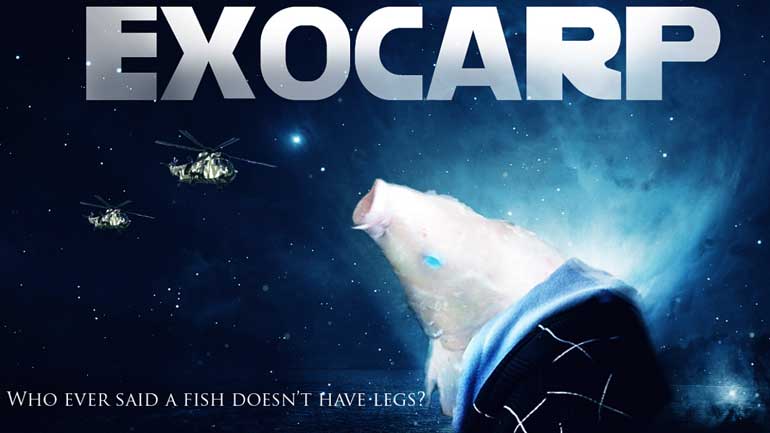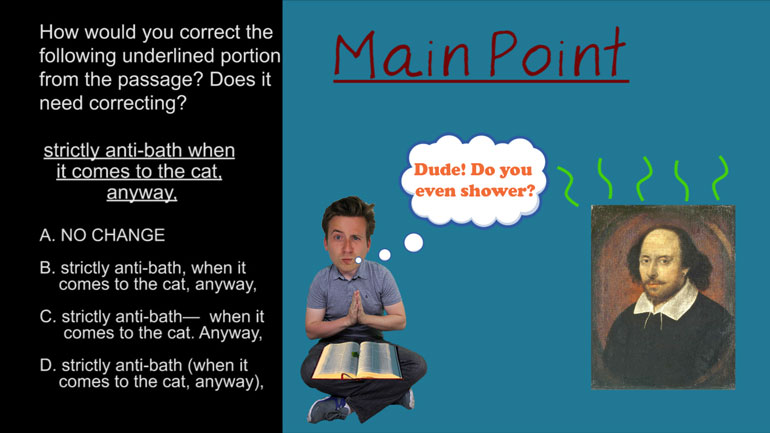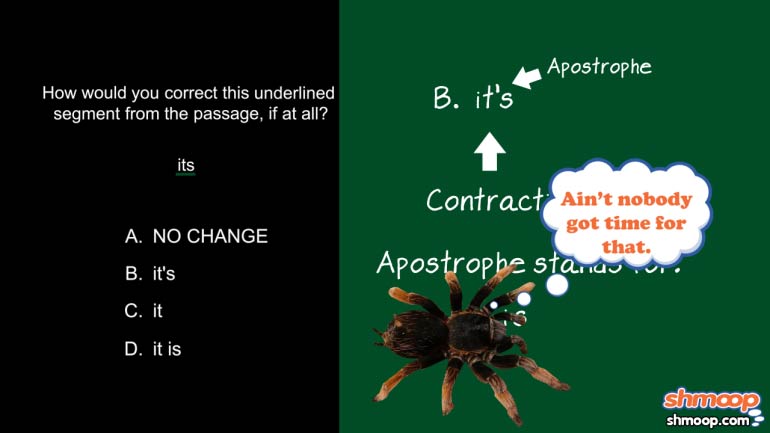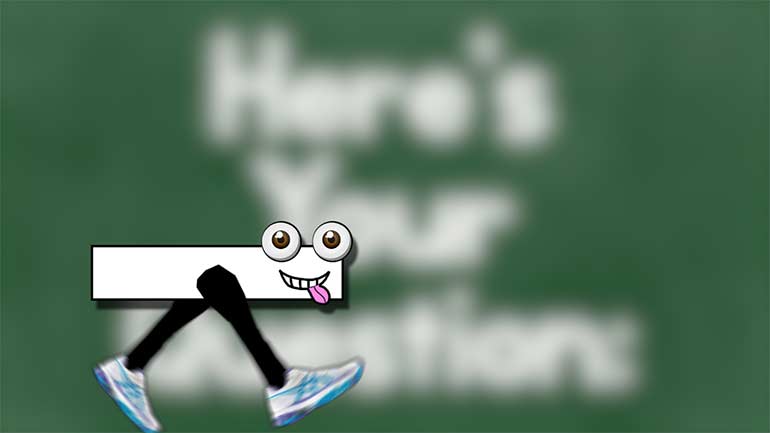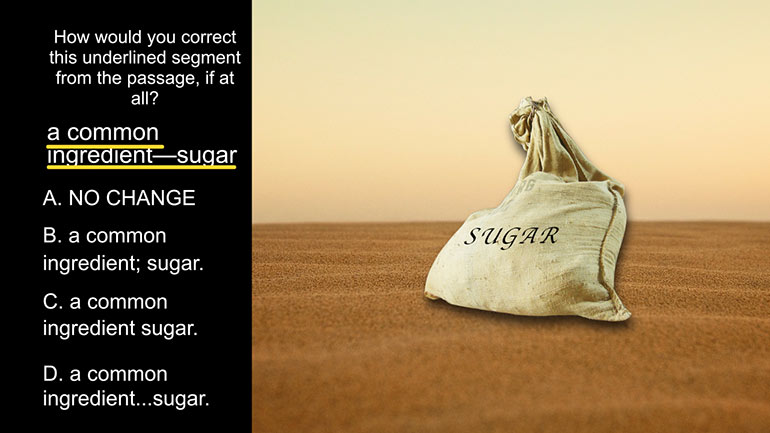ShmoopTube
Where Monty Python meets your 10th grade teacher.
Search Thousands of Shmoop Videos
Punctuation Videos 39 videos
ACT English: Punctuation Drill 2, Problem 2. Where should the semi-colon be placed?
ACT English: Punctuation Drill 2, Problem 4. Which punctuation fits best in this sentence?
ACT English: Punctuation Drill 3, Problem 1. How should this sentence be changed so that it is grammatically correct?
ACT English 3.13 Passage Drill 197 Views
Share It!
Description:
ACT English: Passage Drill 3, Problem 13. Which punctuation mark fits best between the words in the underlined portion?
Transcript
- 00:04
Here's your Shmoop du jour, brought to you by condensed water. It's a lot tastier than condensed milk.
- 00:13
Check out the following passage...
- 00:25
How would you correct this underlined segment from the passage, if at all?
- 00:30
condensate—moisture
- 00:33
And here are the potential answers...
Full Transcript
- 00:41
This question asks us to identify the punctuation required to link the main clause to the phrase
- 00:45
that tags along at the end of the sentence.
- 00:48
Somehow or another, we have to find a way to attach...
- 00:51
"Most of the water seen in the funnel of a waterspout is actually condensate"...
- 00:58
to...
- 00:59
"moisture in the air resulting from the condensation of water vapor"...
- 01:05
without breaking any of the holy laws of grammar.
- 01:10
Choice (D) suggests that we not use any punctuation whatsoever.
- 01:14
This is a mistake, though. We definitely need some kind of punctuation to separate the phrase
- 01:18
from the main clause.
- 01:20
Without punctuation, it becomes nearly impossible to understand that the phrase is helping to
- 01:24
define condensate.
- 01:25
And we know that everybody out there is dying to know what that is so...
- 01:29
(B) is wrong because it uses a semicolon incorrectly.
- 01:34
Semicolons are mainly used to link two independent clauses, meaning clauses that can stand on
- 01:38
their own as complete sentences.
- 01:40
Though the main clause is independent, the phrase that follows doesn't have its own verb,
- 01:45
so it's totally dependent on the main clause for its existence.
- 01:49
Which must be kinda stressful for the main clause.
- 01:51
(C) is incorrect for a similar reason. By putting a period between the clause and the
- 01:57
phrase, (C) is declaring that the phrase is ready to stand as an independent clause.
- 02:01
Unfortunately, this is not the case.
- 02:03
Without a verb, the phrase just isn't ready to face the world alone.
- 02:08
The correct answer is (A). Though a comma would also work here, it's totally OK to use a dash.
- 02:14
Dashes are useful when a writer wants to really emphasize something. So using a dash is a
- 02:18
way of connecting something to a sentence, while also creating some distance.
- 02:22
Thus, romantic relationships between clauses and phrases linked by dashes are notoriously hard to navigate.
Related Videos
ACT English: Punctuation Drill 2, Problem 2. Where should the semi-colon be placed?
ACT English: Punctuation Drill 3, Problem 1. How should this sentence be changed so that it is grammatically correct?
ACT English: Punctuation Drill 3, Problem 2. How should we properly hyphenate the words in this sentence?
ACT English: Punctuation Drill 3, Problem 4. Which choice best formats this list of items?
ACT English: Punctuation Drill 2, Problem 1. Which choice of punctuation best completes the sentence?
